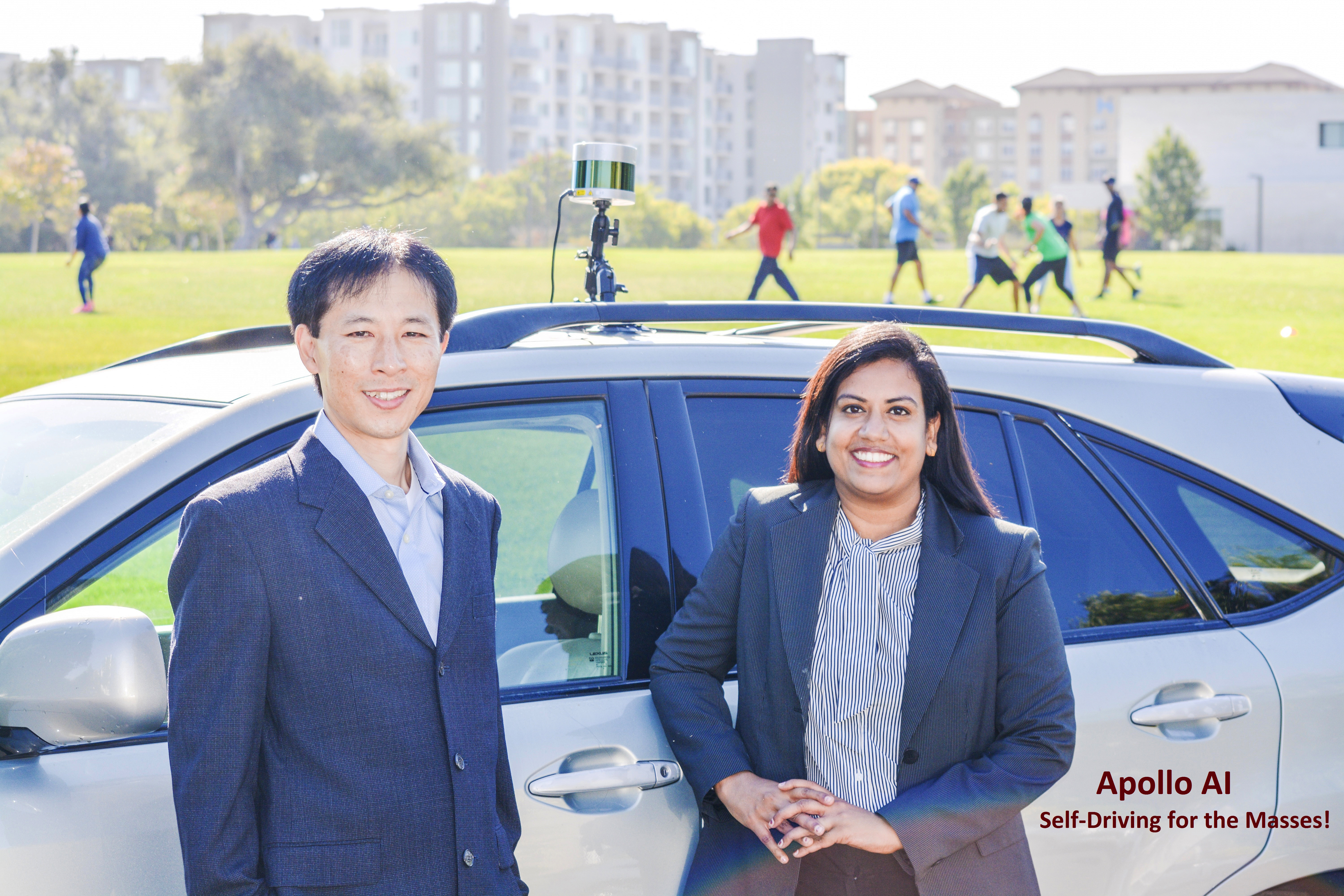
Startup Shoots for a Grand SLAM
When Annapurna (Anu) Yarlagadda, MBA ’16, had an idea for making self-driving cars more affordable, she looked to her Bronco network for help.
“I had an idea for object detection using machine learning, which stemmed from my eclectic background in neuro-biological architectures and technical product management,” she said, “so I approached SCU computer engineering Adjunct Professor Dr. Kiran Gunnam, who has industrial expertise in self-driving vehicles. He agreed that the current software for object processing is very slow and inefficient. He suggested I devise a system that efficiently makes sense of the masses of data procured by an autonomous vehicle’s sensors, drilling it down to just the information that is needed.”
Yarlagadda teamed up with Koji Seto, who earned his Ph.D. in electrical engineering at SCU in 2014, to help turn the idea into a launchable product. With a $225,000 Phase 1 NSF grant and eligibility for Phase 2 and its matching funding of roughly $1.25 million, Yarlagadda and Seto have formed a start-up called Apollo AI here in Silicon Valley. The NSF SBIR program, also known as America’s Seed Fund, allows startups like Apollo AI to bring to market innovative products with the potential to disrupt tomorrow’s industries, such as self-driving. The National Science Foundation supports small businesses with the most innovative, cutting-edge ideas that have the potential to become great commercial successes and make huge societal impacts.
Seto explained his engineering challenge. “When you are behind the wheel of a car, you use your eyes and brain to help you drive. Autonomous vehicles have to do the same work. They have to know what the world around them is, see it, then map it, then know where they are within that world. As the car moves, its location and the world around it is constantly changing. SLAM—short for simultaneous localization and mapping—is the term used in robotics and navigation for the computational function that mimics what is performed by the eyes and brain.” To address these functions, the team is working on two distinct technologies.
Apollo Perception Net is their patent-pending detection and classification system. “Using deep learning for object classification, we are developing software to work with a combination of cameras and LiDAR equipped with inexpensive commodity sensors costing around $3,000, as opposed to high-end specialized sensors that cost about $250,000,” Yarlagadda said. “[This] would make autonomous vehicles super affordable for low-end manufacturers and consumers. Low-cost LiDAR+camera sensors equipped with Apollo’s integrated perception software offer range and resolution enhancement and provides quality comparable to a high-end LiDAR system at the affordable cost of the camera-based system. Apollo Perception Net could be licensed from us directly as a standalone software package or as an integrated app on the popular middleware systems, such as RoS, RTMaps, and Nvidia Driveworks,” she added. Recently, Seto demonstrated the product to several LiDAR and car OEM companies, and the team is also engaging with customers like Nvidia, Visteon and Qualcomm.
In addition to Apollo Perception Net, a product the team is creating from scratch, the second project is to adapt low-complexity SLAM technologies—originally developed at Texas A&M University for the aerospace industry—to suit self-driving vehicles. “We own rights for licensing of SLAM from Texas A&M, and three of their professors are working with us as key contributors. Dr. John Junkins, Dr. Manoranjan Majji, and Dr. Srikanth Saripalli are all highly reputed in the use of SLAM in the aerospace industry as well as autonomous vehicles and sensor systems,” said Yarlagadda, herself an Aggie Master’s graduate. The team will try out their adapted software on self-driving cars using vehicles at Texas A&M’s facilities. “We plan to start testing early next year,” said Seto.
“None of this would have been possible without the connections I’ve made at SCU,” said Yarlagadda. “Our Bronco connection has gotten our foot in the door with alumni and students working at top companies in this field here in Silicon Valley, and the feedback we’ve gotten on customer discovery, developing a business plan, how to penetrate the market, how to improve our products, and how to take them to the next level has been invaluable. Getting a degree from SCU has been a key stepping-stone in making this happen. As co-founders, Koji and I have the strength, capability, and skillset to see this through, and I give credit to SCU.”
Koji Seto, Ph.D. 16 and Annapurna Yarlagadda, MBA ’16 are co-founders of a startup aimed at making self-driving cars more affordable.